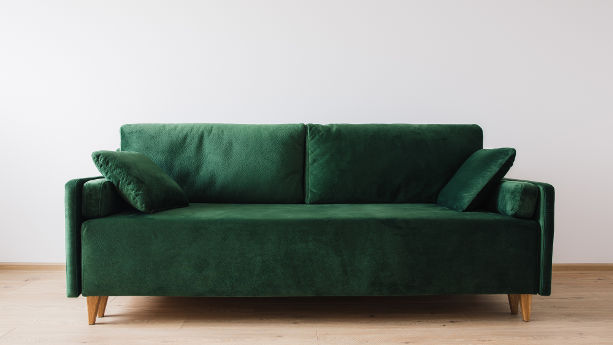
Planning to import or manufacture furniture in Singapore? In this guide, we explain what you must know about regulations, safety standards, lab testing, risks, and more.
Mentioned Products
- Bean bag chairs
- Mattresses
- Bunk beds
- Tables and desks
- Sofas
- Upholstered furniture
Content Overview

FREE CONSULTATION CALL (US, EU & UK)
- Request a free 30-minute call with Ivan Malloci to learn how we can help you with:
- Find product requirements
- Certification and labeling
- Lab testing
Consumer Protection (Consumer Goods Safety Requirements) Regulations
The Consumer Protection (Consumer Goods Safety Requirements) Regulations, or CGSR, cover general consumer goods that are not regulated by other safety regulations in Singapore. Furniture fall into the scope of CGSR.
The goal of CGSR regulations is to enhance product safety of consumer products. To start with, importers shall first classify their products according to the right category.
Furniture Products: Category 1
CGSR category 1 goods include products for which there are applicable international standards. Applicable international standards include:
- EN standards
- ASTM standards
- ISO standards
- IEC standards
Therefore, furniture products such as bunk beds, for which there are international standards, fall into category 1.
Furniture Products: Category 2
Products are classified under category 2 if there are no existing international standards concerning your product. CGSR requires that category 2 goods shall comply with applicable Singaporean safety standards if any.
Importers shall first determine whether their products belong to category 1 or 2 under CGSR, then comply with the requirements as mentioned. Importing non-compliant furniture products may result in force-recall, fines, or imprisonment.
Safety Standards
As mentioned, Singaporean importers can apply European Union, US, or international standards. Here’s an overview of mechanical and general safety standards applicable to furniture:
EN Standards for Furniture (EU)
a. EN 1725 – Domestic furniture. Beds and mattresses. Safety requirements and test methods
b. EN 747 – Bunk beds and high beds. Safety, strength, and durability requirements
c. EN 12521 – Strength, durability, and safety. Requirements for domestic tables
d. EN 527 – Worktables. Safety, strength and durability requirements
ASTM Standards for Furniture (USA)
a. ASTM F1427 – Standard Consumer Safety Specification for Bunk Beds
b. ASTM F1912 – Standard Specification for Safety of Bean Bag Chairs and Bean Bag Covers
c. ASTM F2598 – Standard Consumer Safety Specification for Clothing Storage Chests
ISO Standards for Furniture (International)
a. ISO 9098 – Bunk beds for domestic use – Part 1: Safety requirements
b. ISO 7170 – Storage units determination of strength and durability
c. ISO 7172 – Tables determination of stability
Fire Safety Standards
Fire safety is obviously essential when it comes to furniture and upholstered furniture in particular. Here’s an overview of EU and US fire safety standards :
EN Standards (EU)
a. EN 1021-1: Upholstered furniture – Ignition source smouldering cigarette
b. EN 1021-2: Upholstered furniture – Ignition source match flame equivalent
c. EN 597-1: Mattresses and upholstered bed bases – Ignition source smouldering cigarette
d. EN 597-2: Mattresses and upholstered bed bases – Ignition source match flame equivalent
You can learn more about EU fire safety standards for furniture in this article.
ASTM Standards (USA)
a. E1352-16 Standard Test Method for Cigarette Ignition Resistance of Mock-Up Upholstered Furniture Assemblies
b. E1353-16 Standard Test Methods for Cigarette Ignition Resistance of Components of Upholstered Furniture
c. E1537-16 Standard Test Method for Fire Testing of Upholstered Furniture
You can learn more about US fire safety standards for furniture in this article.
Labeling Requirements
The CGSR specifies that all imported goods including furniture products must have an English language label. Besides that, CGSR doesn’t specify any other requirements for furniture labeling.
However, CGSR states that importers shall provide sufficient and appropriate warnings and relevant information to consumers. With that said, importers might consider including the following information for furniture products:
- Country of origin
- Manufacturer’s contact
- Warning label (if any)
- Product instruction (if any)
- Traceability label
Lab Testing
Importers are liable for importing non-compliant products. Often third-party lab testing is the only way to verify if their furniture products are compliant before the importation. They can also help you assess which EN, ASTM, or ISO standards may apply to your product.
Importers shall either obtain relevant test reports and certificates from the supplier or book a lab testing via reputable testing companies such as SGS, TUV, and Intertek.
In most cases, those testing companies provide a one-stop solution including lab testing, consultation, and more relevant services.
















Is there a requirement for fire retardant furniture in communal facilities in Singapore? e g clubhouse of an MCST undergoing refurbishment
83078434
June Cheah